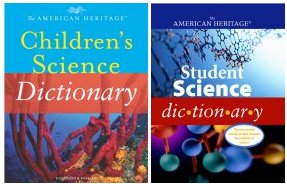Helping the Cause of Macaws Additional Information
You can learn more about the Tambopata Macaw Project at www.wildlifeprotection.info/tambopata.htm (Wildlife Protection Foundation), or www.duke.edu/~djb4/(Donald J. Brightsmith).
Ramsayer, Kate. 2006. Polly shouldn’t get a cracker. Science News for Kids (Jan. 25). Available at http://www.sciencenewsforkids.org/articles/20060125/Note2.asp.
Sohn, Emily. 2004. The birds are falling. Science News for Kids (Dec. 22). Available at http://www.sciencenewsforkids.org/articles/20041222/Note2.asp.
ScienceFairZone
Saving birds from wind turbines
http://www.sciencenewsforkids.org/articles/20061011/ScienceFairZone.asp
Books recommended by SearchIt!Science:
![[book]](https://www.sciencenewsforstudents.org/wp-content/uploads/2019/11/a1413_b1204.jpg) |
Parrots
Published by Franklin Watts/Scholastic, 1996.
More than 300 species of birds can be called parrots. Read about these fascinating birds. Find out about their ability to imitate human voices and why their beaks are shaped like they are. Learn about their many relatives. The book includes an index, further readings, and lots of color photos. |
![[book]](https://www.sciencenewsforstudents.org/wp-content/uploads/2019/11/a1413_b2741.jpg) |
Rain Forest
Published by Farrar, Straus and Giroux, 1988.
Something more powerful than a jaguar is threatening the rain forest—the home of sloths, anteaters, toucans, and monkeys. In this fiction book, bulldozers are tearing down the trees. News that the birds have lost their perches spreads quickly. All the creatures in the forest, even the jaguar, are frightened. Eventually, heavy rains save them. |
![[book]](https://www.sciencenewsforstudents.org/wp-content/uploads/2019/11/a1413_b3128.jpg) |
Animals Brightly Colored
Published by Charlesbridge Publishing, 1998.
Animals Brightly Colored is a guessing game for your senses. Look at the close-up illustrations of animals. Try to guess what they are. A two-page spread identifies each animal and provides additional information about it. The book ends with even more facts about the animals’ behaviors. |
Power Words
clay A sticky material that occurs naturally in the ground and is soft and flexible when wet. Clay is made up of tiny particles of broken-down rock. It hardens when it is heated, and it is used to make bricks and pottery.
egg The round or oval structure that is laid by a female animal, such as a bird, fish, insect, or reptile. An egg is surrounded by a shell or membrane. After an egg is fertilized, a young animal starts to develop inside it.
endangered species A plant or animal that is found in such small numbers that it is in danger of becoming extinct, usually because its habitat is being destroyed. Ginkgo trees, chimpanzees, and blue whales are endangered species.
jungle An area of thick forest that is found in tropical regions. Jungles have hot, humid climates, are overgrown with trees, bushes, and vines, and are home to a wide variety of living things.
nest A shelter or container made by an animal, especially one used to lay eggs or raise young in. Birds, mice, squirrels, fish, and many insects make nests.
toxin A poison that is made by a living thing. Toxins in snake or spider venom are used to kill prey. Toxins produced by bacteria can cause disease.
Copyright © 2002, 2003 Houghton-Mifflin Company. All rights reserved. Used with permission.
